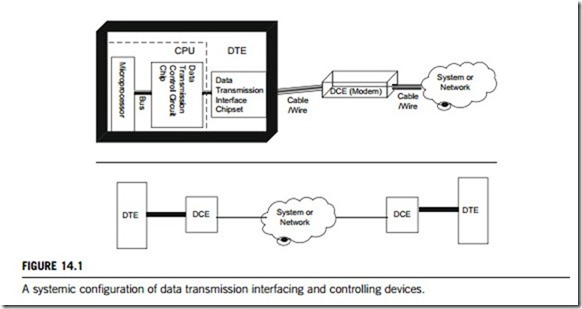The term data transmission concerns the transmission of digital electric or electromagnetic signals from source to destination through some electric media over a physical distance, whereas analog transmission involves the transmission of analog signals. The primary difference between the two is whether the transferred and processed messages in the system are digital or analog.
The digital signal refers to two concepts. It can refer to discrete-time signals that have a discrete number of levels, for example a sampled and quantified analog signal; or to the continuous-time waveform signals in a digital system that represent a bit-stream. In the first case, a signal that is generated by means of a digital modulation method is considered to be converted from an analog signal, while it is considered as a digital signal in the second case.
An analog signal is a continuously variable signal in both time and amplitude, generally carried by use of modulation. Quantization of information is not necessary, unlike digital signals. Data are represented by physical quantities rather than digital bits. Analog transmission enables information to be transmitted from point-to-point or from one point to many. Once the data have arrived they are converted back into digital form to be processed by the receiving device.
Any industrial control system (or network) connects equipment such as computers, programmable controllers, robots, and printers, which can be the terminals for transmitting and receiving data signals. These terminals are called DTEs (data terminal equipment). However, the electrical signals trans- mitted across the cables or wires must be analog. This requires conversion between digital and analog signals and vice versa. The converters are modems or multiplexers, known as DCEs (data circuit- terminating equipment).
DTEs can be very diverse in electrical parameters, mechanical properties and transmission modes, etc. For example, some computers or programmable controllers use serial ports, whereas some use parallel. However, there is no such diversity in DCEs. To solve conflicts between DTEs and DCEs, special interfaces have been designed as the DTE DCE Interface Standards. Typical DTE DCE Interface Standards are RS (Recommended Standard) series such as RS-232, RS-485, etc.
Data transmission between DTEs must be either synchronous or asynchronous, so any DTEs must have special devices to handle synchronous or asynchronous receiving and transmitting. These special devices are termed transmission control devices.
Any industrial control system consists of DTE, DCE, DTE-DCE interface devices, and trans- mission control devices. These elements can be configured as shown in Figure 14.1. This chapter briefly introduces these elements as they are used in industrial control systems.
